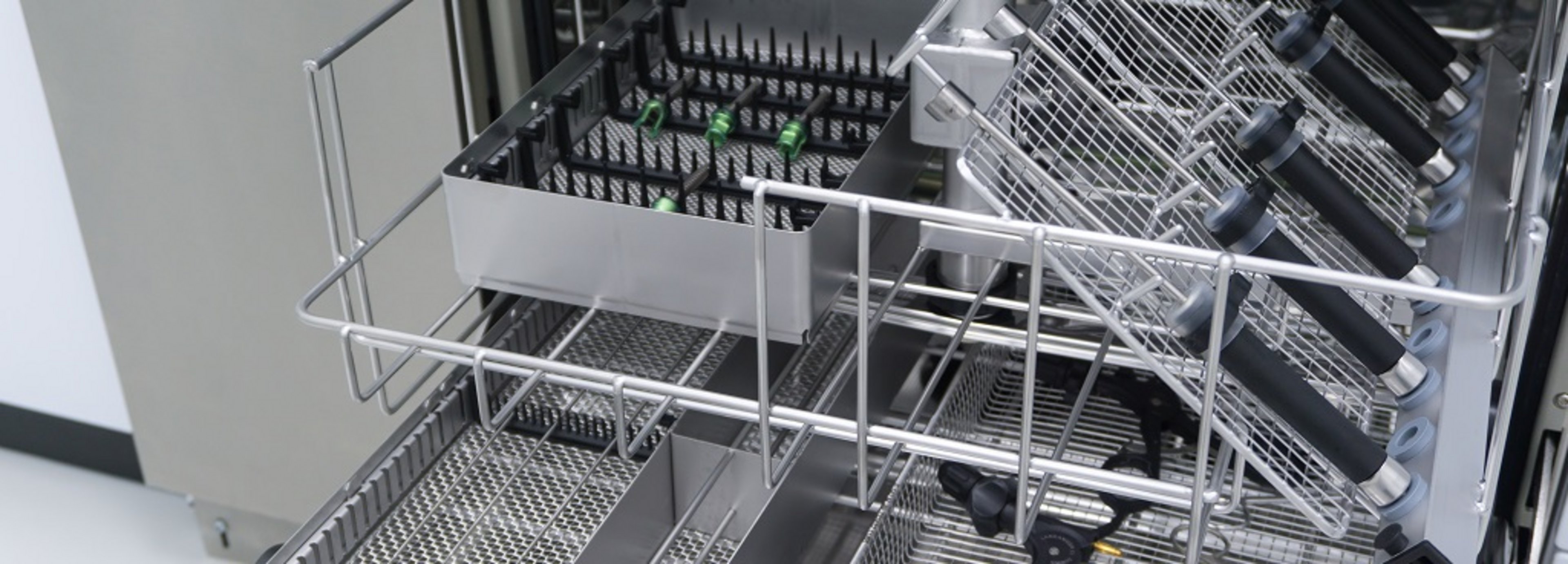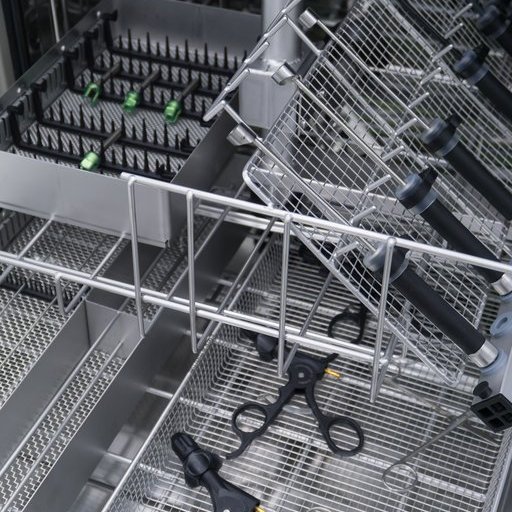"Reprocessing validation" – definition, procedures, and tests according to DIN EN ISO 17664 and DIN EN ISO 17665
The term "reprocessing validation," which is often used incorrectly, refers in this context to the validation of manufacturer instructions for reprocessing reusable medical devices. The terms "cleaning validation" and "reprocessing validation" are often confused in everyday language. However, it should be noted that these are fundamentally different topics. Cleaning validation involves checking the effectiveness of the final cleaning process after manufacture (see blog "Cleaning validation"). "Reprocessing validation," on the other hand, involves validating the reprocessing procedure for reusable medical devices as described in the manufacturer's instructions.
The safe reuse of medical devices is a key component of patient safety. Validating reprocessing procedures in accordance with DIN EN ISO 17664-1/-2 and DIN EN ISO 17665 ensures that the cleaning, disinfection, and sterilization processes specified by the manufacturer are effective and reproducible. The accredited testing laboratory plays a crucial role in testing the described procedures under accredited and monitored laboratory conditions. This white paper explains the legal framework, the benefits for patients, the risk assessment by the manufacturer, and the typical testing procedures in the laboratory.
Regulations and standards
EU Medical Device Regulation (MDR 2017/745): Manufacturers must provide detailed reprocessing instructions for reusable medical devices and validate their effectiveness.
DIN EN ISO 17664-1/-2: Specifies what information the manufacturer must provide for reprocessing (cleaning, disinfection, sterilization, drying, inspection, packaging, storage).
DIN EN ISO 17665: Specifies the requirements for the development, validation, and control of the application of a steam sterilization process for medical devices.
Medical Devices Operator Ordinance (in Germany: MPBetreibV, §8): Reprocessing must be carried out using suitable, validated procedures to ensure the safety of patients, users, and third parties. Proper reprocessing is assumed if the KRINKO-BfArM (German institution) recommendations are followed.
Benefits for patients
Infection prevention: Validated procedures minimize the risk of nosocomial infections, which cause thousands of deaths every year.
Safety and functionality: Validation ensures that the medical device is free of microbial contamination after repeated reprocessing and retains its function.
Transparency and traceability: Documented validation creates trust and legal certainty for users and patients.
Risk assessment by the manufacturer
- Normative basis: DIN EN ISO 14971 (Risk management for medical devices).
- Objectives of risk assessment:
- Identification of typical contaminants (e.g., blood, proteins, biofilm).
- Selection of suitable methods (manual, mechanical, chemical, thermal).
- Definition of acceptance criteria (e.g., residual protein < 6.4 µg/cm², bioburden reduction).
- Manufacturer's obligations:
- Provision of validated reprocessing instructions.
- Performing worst-case analyses (e.g., hard-to-reach areas, maximum contamination).
- Documentation and proof of effectiveness.
Sample preparation and testing procedures in the laboratory
The validation of reprocessing procedures must be carried out under conditions that simulate clinical use as realistically as possible. This applies both to the type of contamination and to the test methods used to verify the effectiveness of cleaning and disinfection.
Simulation of real contamination
The biggest challenge is to replicate the typical contaminants after the medical device has been used as intended. This simulation must take the following aspects into account:
- Type of contamination: Blood, tissue, proteins, fats, biofilm, possibly microbiological contamination (depending on the clinical application).
- Worst-case scenarios: Narrow passages, complex geometries, surfaces that are difficult to access, possibly also materials.
- Drying time: In practice, contaminants often dry, which makes cleaning more difficult.
Example of a realistic simulation:
- Use of sheep blood or synthetic test contamination (e.g., Browne Soil) to simulate blood and protein residues.
- Application to critical areas of the product (e.g., joints, lumens) in accordance with expected real-life contamination (or a worst-case scenario thereof).
- Allow to dry for e.g., 2 hours at room temperature to simulate clinical reality.
- Finally: Perform the cleaning and disinfection procedure specified by the manufacturer.
Typical test methods and objectives
The laboratory tests serve to verify the effectiveness of the treatment. They can be divided into three main categories:
a) Chemical testing methods
- Protein residues:
- BCA test (bicinchoninic acid): Quantification of residual protein in µg.
- TOC analysis (Total Organic Carbon): Detection of organic residues (including cleaning agent residues).
- Objective: To verify that cleaning removes organic contamination and remains below limit values (e.g., < 6.4 µg protein per cm² of medical device surface).
b) Microbiological testing methods
- Bioburden test: Determination of the bacterial count before and after cleaning (ISO 11737-1). Country-specific requirements for bacterial count reduction must be met.
- Sterility testing (during sterilization validation): Testing for sterility
- Objective: To ensure that disinfection and sterilization are effective.
b) Material and functional testing (by the manufacturer)
- Mechanical tests: Testing joints and closing mechanisms after repeated cleaning.
- Objective: To ensure that the product retains its function and integrity.
Evaluation of results and consequences
acceptance criteria:
- Residual protein below threshold value.
- Microbiological reduction to defined level.
- No material damage.
Measures in case of non-compliance:
- Adjustment of processing instructions.
- Selection of alternative processes or chemicals.
- Limitation of the product's service life.
Documentation:
- Validation report as proof for authorities and users.
- Revalidation in the event of changes to the product or process.
Conclusion
The validation of reprocessing procedures is a legally required and safety-related process. It protects patients from infections, ensures the functionality of medical devices, and meets regulatory requirements. Manufacturers are responsible for demonstrating the effectiveness of their instructions through risk assessment and laboratory testing.
Newsletter registration




